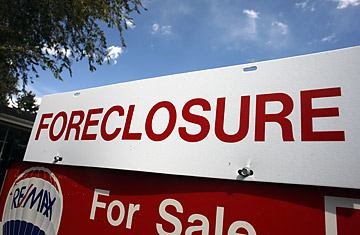
Grade: F
The Plan: Enacted on Oct. 1, Hope for Homeowners was to be the main foreclosure rescue plan from Congress, which allocated $300 billion for the effort. Supporters in Congress, like Massachusetts Representative Barney Frank, said the program would allow hundreds of thousands of borrowers, perhaps millions, to refinance into lower-cost loans by cutting the amount they owed, which for many at-risk-of-default homeowners was more than their house was worth.
The Result: So how many people has Hope for Homeowners saved from foreclosure? Zero. There have been 326 applications in the three months since the program started, but none of those people — let alone the nearly 6 million homeowners who, by some estimates, may face foreclosure in the next few years — have received a new mortgage or a modification for the one they have. What's more, none of the major mortgage lenders, such as Bank of America, Citigroup and Wells Fargo, has signed on to the loan-principal-reduction program — which gives Hope for Homeowners little chance of being successful anytime soon. "Foreclosure is the problem we have to spend a lot more effort trying to solve," says the Economic Policy Institute's Robert Scott. "We need to put a floor under housing prices, and stopping foreclosures is the way you do that."